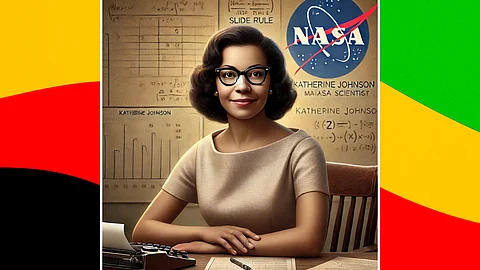
- Home
- About Us
- SOULIVITY TODAY Radio Show!
- COMMUNITY HUB
- GO SHOP by Soulivity!
- ColumnsColumns
- CultureCulture
- Lifestyle
- Contact Us!

When we think of the pioneers who propelled the U.S. into space, names like Neil Armstrong and John Glenn often come to mind. However, behind these legendary astronauts stood a brilliant mathematician whose calculations made their journeys possible—Katherine Johnson. A trailblazer in STEM and a symbol of resilience, Johnson's contributions to space exploration were vital, yet her name remained in the shadows for decades.
Born in 1918 in White Sulphur Springs, West Virginia, Katherine Coleman Goble Johnson showed an exceptional talent for numbers from an early age. At just 10 years old, she entered high school, an extraordinary feat for any child, let alone an African American girl in the segregated South. Encouraged by her parents and teachers, she pursued her passion, eventually earning degrees in mathematics and French from West Virginia State College at 18.
In 1953, Johnson joined the National Advisory Committee for Aeronautics (NACA), the precursor to NASA, as a "human computer" at Langley Research Center. She worked in the segregated West Area Computing Unit, where African American women performed complex calculations by hand.
Her sharp intellect and problem-solving skills quickly caught the attention of her supervisors, and she was assigned to work with engineers on critical flight research. When NASA transitioned to digital computers, astronaut John Glenn personally requested that Johnson verify the computer's orbital calculations before his historic 1962 spaceflight, famously saying, "Get the girl to check the numbers." Her approval was the final assurance needed for Glenn’s successful orbit around Earth.
Katherine Johnson’s impact on space travel didn’t end there. She played a pivotal role in calculating trajectories for the Apollo 11 moon landing in 1969 and later contributed to the Apollo 13 mission, helping NASA develop emergency return procedures after an onboard explosion threatened the astronauts’ lives. Her meticulous calculations helped ensure the crew’s safe return, proving that her genius extended beyond the limits of Earth.
For decades, Johnson’s contributions remained largely unrecognized by the public. However, that changed with the 2016 film Hidden Figures, which brought her story—and those of fellow African American NASA mathematicians Dorothy Vaughan and Mary Jackson—to global attention.
In 2015, at the age of 97, Johnson received the Presidential Medal of Freedom, the highest civilian honor in the U.S., from President Barack Obama. NASA also named a research facility after her, cementing her place in history.
Katherine Johnson’s legacy is one of perseverance, brilliance, and an unshakable belief in the power of education. Her work paved the way for women and people of color in STEM fields, proving that talent knows no boundaries. As we celebrate Black History Month, we honor her contributions and continue to be inspired by her journey—from a young girl with a love for numbers to a NASA trailblazer whose calculations changed the course of history.
